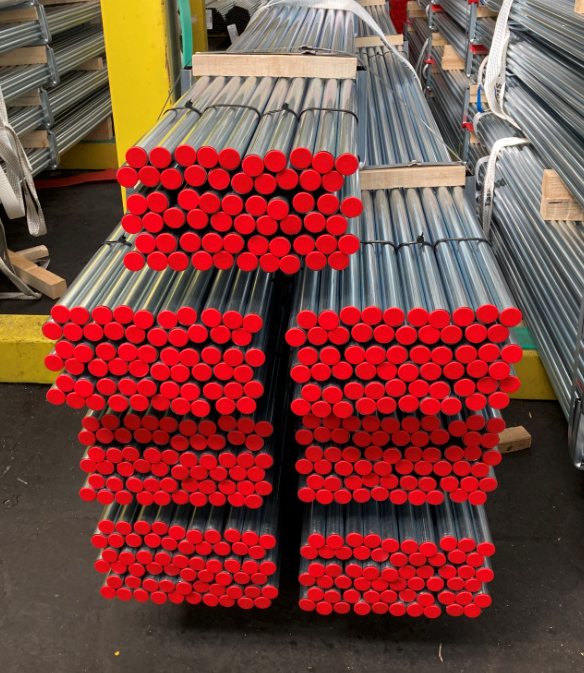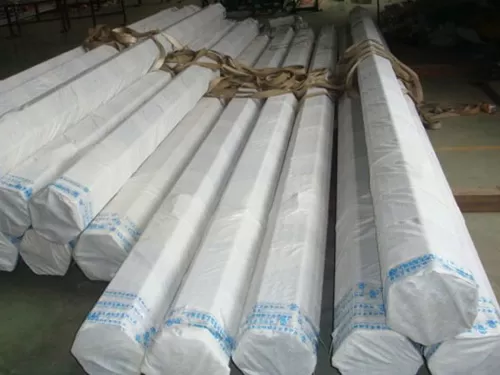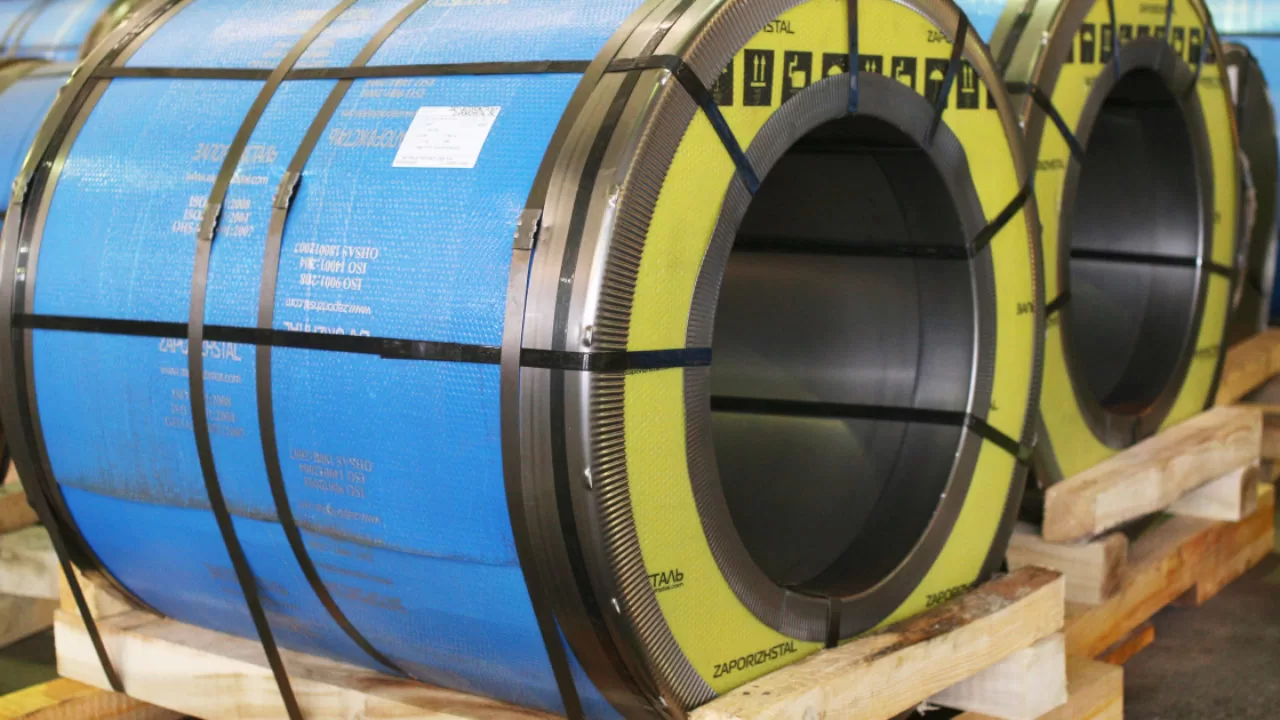How to do automatic strapping and packing for the steel rods?
Are you struggling with the slow, dangerous, and inefficient process of manually bundling and strapping steel rods? It’s a common problem in many steel processing plants. Workers have to manually handle and align heavy, awkward rods, which creates a massive safety risk and a huge bottleneck in your production flow. This process burns through labor hours and often results in loose, inconsistent bundles that can cause problems during shipping. You need a solution that is safer, faster, and more reliable.
To automate the strapping and packing of steel rods, you need an integrated system that begins with an automatic bundle-forming station. This station aligns the loose rods into a tight, consistent bundle. The bundle is then transferred via powered conveyors to a heavy-duty strapping machine that applies multiple straps. The entire process is automated, from initial forming to final discharge, significantly improving safety, speed, and bundle quality.

Making the move to automation is a big decision, and I understand the pressures you face as a plant manager. You need to increase output, control costs, and above all, keep your people safe. A breakdown on the line means lost money and a hit to your production schedule. I’ve been on the factory floor, and I’ve designed these systems for years. I know that a successful automation project is about more than just buying a machine. It’s about designing a complete solution that solves your specific problems. Let’s walk through what you need to look for to build a truly effective and reliable steel rod packing line.
How do you automatically form a perfect bundle for strapping?
Is getting a tight, consistent bundle of steel rods a constant challenge in your plant? When workers have to form bundles by hand, the results are often sloppy. Some bundles are loose, some are misshapen, and the count can be wrong. This inconsistency creates problems for strapping, storage, and transport, and the manual process is painfully slow and a major safety hazard. This is a critical first step, and getting it wrong affects the entire packing process.
To automatically form a perfect bundle, you need a dedicated bundle-forming station. This piece of equipment uses a combination of a collecting pocket, vibrating tables, and aligning arms. Loose rods are fed into the pocket, and the system uses vibration and mechanical guides to shake and arrange the rods into a dense, tightly packed hexagonal or square shape, ready for strapping. This eliminates manual handling and ensures every bundle is identical.

I’ve seen the difference this makes up close. One of my first major projects was for a steel bar manufacturer who was losing a lot of time and money at their packing station. Their workers were essentially wrestling with the rods all day. It was slow, and they had too many back and shoulder injuries. We installed an automatic bundle-forming line. The change was immediate. The bundles coming out were so tight and perfect they looked like they were machine-made, because they were. It didn’t just speed up their process; it improved the quality of their final product and the safety of their workplace.
From a Loose Pile to a Perfect Bundle
The bundle forming station is where the magic begins. It turns a chaotic pile of rods into a neat, organized unit. The process is simple but very effective.
- Collection: Loose rods are transferred from your production line and collected into a specially shaped hopper or "pocket." The shape of this pocket is often designed to naturally encourage the rods to form a hexagonal shape, which is the densest way to pack circles.
- Vibration and Alignment: A powerful vibration table underneath the pocket shakes the bundle. This causes the rods to settle, removing the gaps between them. At the same time, mechanical side arms may press in on the bundle to further compact it.
- Transfer: Once the bundle is formed, a pusher mechanism smoothly transfers the tight bundle out of the forming station and onto the conveyor system that leads to the strapping machine.
This automated process is far more consistent than any manual method. Every single bundle has the same shape and density, which makes the strapping process much more effective and reliable.
Adding Accuracy: Counting and Weighing
Beyond just forming a shape, an automated system can also ensure the bundle contains the correct number of rods. This is crucial for inventory control and for meeting customer order specifications.
| Counting Method | How It Works | Best For |
|---|---|---|
| Piece Counting | A vision system with a camera counts each rod as it enters the forming station. | Smaller diameter rods where an exact piece count is critical for the customer. |
| Weighing | The forming station is built on top of load cells. It bundles rods until a target weight is reached. | Larger diameter rods or applications where the total weight is more important than the exact piece count. |
| Calculated Count | By knowing the weight of a single rod, the system can calculate the piece count based on the total bundle weight. | A good balance of accuracy and cost for most standard applications. |
Integrating one of these systems provides a level of quality control that is impossible to achieve with manual bundling. It eliminates guesswork and ensures that every bundle that leaves your plant is perfect.
What kind of strapping machine is best for heavy steel rod bundles?
Are you worried that a standard strapping machine won’t be tough enough to handle heavy steel rod bundles day in and day out? You’re right to be concerned. Steel rod bundles are a demanding application. They are heavy, abrasive, and require very high strap tension to stay secure. A light-duty or standard machine will fail quickly under this kind of stress, leading to constant downtime and expensive repairs. You need a machine that is purpose-built for the steel industry.
The best strapping machine for heavy steel rod bundles is a heavy-duty model with a robust, high-tension strapping head. The machine frame must be constructed from heavy, welded steel to withstand the impact of the bundles. Crucially, the choice between high-strength PET (polyester) strapping and steel strapping must be made based on the bundle’s weight and the abrasiveness of the rod surface.

In my experience building machines for the steel industry, I can tell you that the strapping head is the heart of the machine, and it takes the most punishment. I visited a rebar plant that was using a general-purpose strapping machine. The maintenance manager showed me a pile of broken parts from their strapping head. The high tension and the rough surface of the rebar were simply shredding the machine’s internal components. We replaced it with a machine equipped with a strapping head designed specifically for steel products, with hardened steel parts and a more powerful motor. It solved their reliability issues completely.
The Strapping Head: Power and Durability
The strapping head is the component that tensions, seals, and cuts the strap. For steel rod applications, this head must be engineered for high performance and a long life. Look for features like:
- High Tension Capability: The head should be able to pull the strap extremely tight to keep the heavy rods from shifting.
- Hardened Components: Key parts that come into contact with the strap, like the tensioning wheel and grippers, should be made from specially hardened tool steel to resist wear.
- Simple, Robust Mechanics: Fewer moving parts often mean fewer things can go wrong. A well-designed head is easy to access for routine maintenance like cleaning and lubrication.
Steel Strap vs. PET Strap for Rods
This is a critical decision. Both options have their place, but one is likely better for your specific product.
| Feature | Steel Strapping | High-Strength PET Strapping |
|---|---|---|
| Tension Strength | Very High. Best for extremely heavy or unstable bundles. | High. Suitable for most standard bundles. |
| Sharp Edges | Excellent resistance to being cut or frayed by sharp rod ends. | Can be vulnerable to sharp edges unless corner protection is used. |
| Elongation | Very low stretch. Stays tight. | Has some elongation, which can help absorb shocks during transport. |
| Safety | Can have sharp edges, posing a risk to workers cutting it. | Safer to handle and cut. No sharp edges. |
| Rust | Can rust and stain the product if not treated. | Will not rust. |
| Cost | Generally higher material cost. | Generally lower material cost. |
For most standard round or smooth bar bundles, modern high-strength PET strapping is an excellent choice. It’s cost-effective, safe for workers, and provides enough tension. For very heavy bundles (e.g., over 5 tons), bundles of rebar with very rough surfaces, or products that will be stored outdoors for a long time, steel strapping is often the more reliable choice. A good supplier will help you analyze this trade-off.
How can the system improve both throughput and worker safety?
As a plant manager, you are constantly balancing the need for higher production with the absolute requirement to keep your team safe. These two goals can seem like they are in conflict. Pushing for more speed can sometimes lead to unsafe shortcuts. With manual processes for heavy materials like steel rods, this conflict is a daily reality. The risk of crushing, pinching, and strain injuries is always present.
A fully automatic bundling and strapping line improves both throughput and safety at the same time. It increases throughput by replacing slow manual tasks with fast, repeatable machine actions. It boosts safety by creating a "no-touch" system where heavy bundles are moved and secured entirely by machine, removing workers from hazardous operational zones and eliminating the risks associated with manual handling of heavy, unstable loads.

I believe that the safest system is almost always the most efficient system. A well-designed automated line proves this. I worked with a client who had a team of four people bundling and strapping large steel bars. Their process was slow, and their injury rate was high. We installed a fully automated line. It now produces more in one shift than they used to produce in two, and it is run by a single supervisor who monitors the system from a safe control panel. Their throughput went up dramatically, and their recordable injuries in that department went to zero.
Designing the "No-Touch" Workflow
The core principle of a safe and efficient line is to automate the movement of the product. Heavy bundles should never be pushed, pulled, or guided by hand. This is achieved through an integrated material handling system.
- Powered Roller Conveyors: These are the main arteries of the line. They are heavy-duty and designed to move bundles weighing several tons smoothly and at a controlled speed.
- Chain Transfers: These are used to move bundles sideways, for example, from the main conveyor line onto a parallel strapping line or into a discharge area. They lift the bundle, move it across, and then lower it. This allows for right-angle turns without any manual effort.
- Ejectors and Stops: Heavy-duty pneumatic or hydraulic stops rise from the conveyor to halt the bundle in the precise position for strapping. After strapping, an ejector can push the bundle onto the next section of the conveyor.
This carefully choreographed movement, controlled by the central PLC, ensures a fast and continuous flow of material with no need for operators to be near the heavy bundles.
Safety and ROI: Two Sides of the Same Coin
Investing in a safe, automated system has a clear and measurable return on investment (ROI) that goes beyond just labor savings.
| Cost Factor | Manual Process (4 Workers) | Automated Line (1 Supervisor) |
|---|---|---|
| Labor Cost | High (4 salaries + benefits) | Low (1 salary + benefits) |
| Throughput | Low (e.g., 10 bundles/hour) | High (e.g., 30+ bundles/hour) |
| Injury Costs | High Risk (Insurance, lost time) | Very Low Risk |
| Product Quality | Inconsistent | Consistent, High Quality |
When you reduce the risk of a serious injury, you are saving a huge potential cost in insurance claims, production shutdowns, and legal fees. When you increase your throughput, you can ship more products and generate more revenue. The safety features are not just a cost; they are an investment that protects your people and your profitability. A fully guarded system with light curtains, physical barriers, and emergency stops is not just a feature; it’s the foundation of a modern, productive, and responsible operation.
What features allow the line to handle different bundle sizes and shapes?
Does your factory produce a wide range of steel rod products? Maybe you switch between different diameters, lengths, or even bundle shapes like square and hexagonal throughout the week. If you have to manually re-configure your packing line for every new product, you lose a huge amount of valuable production time. This changeover downtime can be a major hidden cost and a source of inefficiency.
A modern packing line handles different bundle sizes and shapes through automated, adjustable components controlled by a central PLC with pre-set recipes. Adjustable side guides on the conveyors, a flexible bundle-forming pocket, and a movable strapping head can all be automatically repositioned based on the selected product. An operator simply chooses the next job from a touch screen, and the entire line adjusts itself in seconds, eliminating manual setup time.

This ability to change over quickly is essential for flexible manufacturing. I remember a customer who manufactured specialty steel bars for the automotive industry. They ran dozens of different product codes, and their old packing line required hours of mechanical adjustments for each change. It was a huge bottleneck. We built them a line with fully motorized adjustments and a recipe system. Their changeover time went from two hours to under two minutes. It completely changed their business, allowing them to take on smaller, more profitable custom orders that their competitors couldn’t handle efficiently.
The Mechanics of Automatic Adjustment
Flexibility is not an accident; it’s designed into the machine from the start. Several key components are built to be adjustable on the fly.
- Motorized Guides: Instead of manual hand-cranks, the guide rails along the conveyors are mounted on motorized actuators. The PLC tells them exactly how far apart to be to guide the specific bundle width.
- Adjustable Forming Pocket: The pocket that forms the bundles can be designed with moving walls that adjust to create larger or smaller hexagonal or square shapes.
- "Floating" Strapping Head: The entire strapping head and arch assembly can be mounted on a track that allows it to move horizontally along the conveyor. This allows the system to place straps at different points along the bundle’s length, for example, placing two straps on a short bundle or four straps on a long one.
Recipes: The Key to Zero-Time Changeover
The "recipe" system is the brain that makes all this physical adjustment useful. It’s a library of all your products stored in the machine’s HMI (Human-Machine Interface).
| Recipe Name | Rod Diameter | Bundle Shape | Rods per Bundle | Strap Positions |
|---|---|---|---|---|
| Product A-10 | 10mm | Hexagonal | 91 | 50cm, 250cm |
| Product B-20 | 20mm | Hexagonal | 37 | 75cm, 300cm |
| Product C-30 | 30mm | Square | 25 | 100cm, 200cm, 300cm |
When the operator selects "Product C-30," the PLC recalls all the stored parameters. It commands the forming station to aim for a 25-piece square bundle, tells the conveyor guides to move to the correct width, and instructs the strapping head to apply three straps at the 1m, 2m, and 3m marks. This eliminates the need for tape measures, wrenches, and guesswork. It ensures that the very first bundle of a new run is perfect, every time. This level of automation provides the flexibility you need to respond to customer demands without sacrificing productivity.
Conclusion
Automating your steel rod packing with an integrated line that forms, conveys, and straps is the best way to increase speed, ensure safety, and produce consistent, high-quality bundles.









